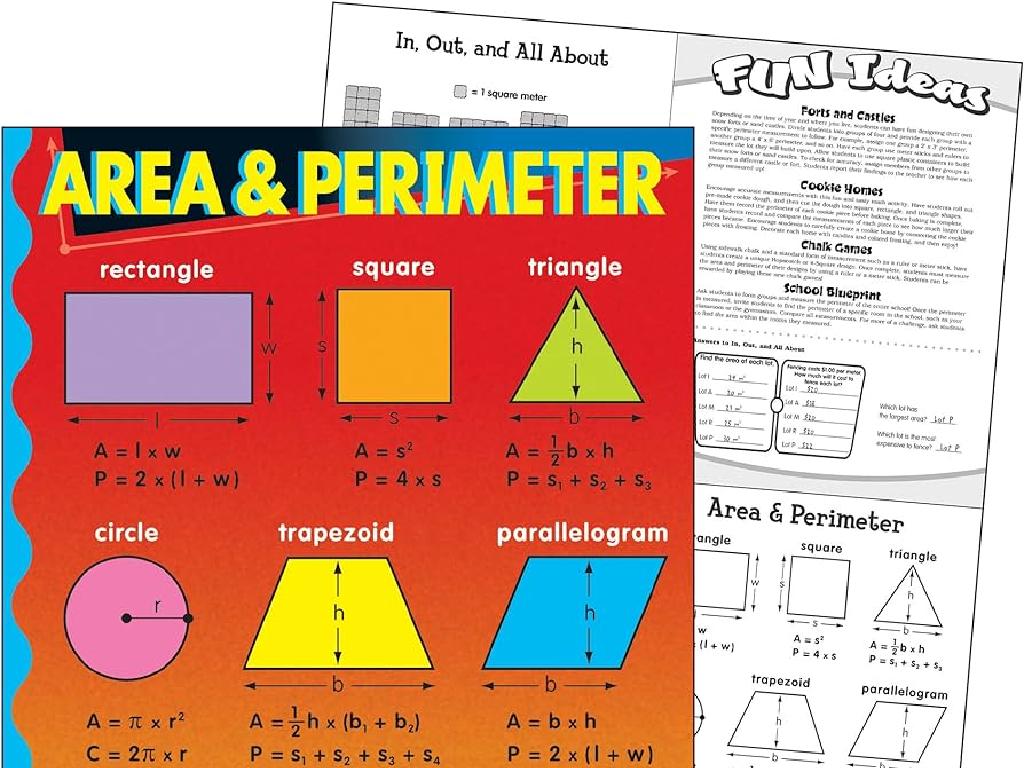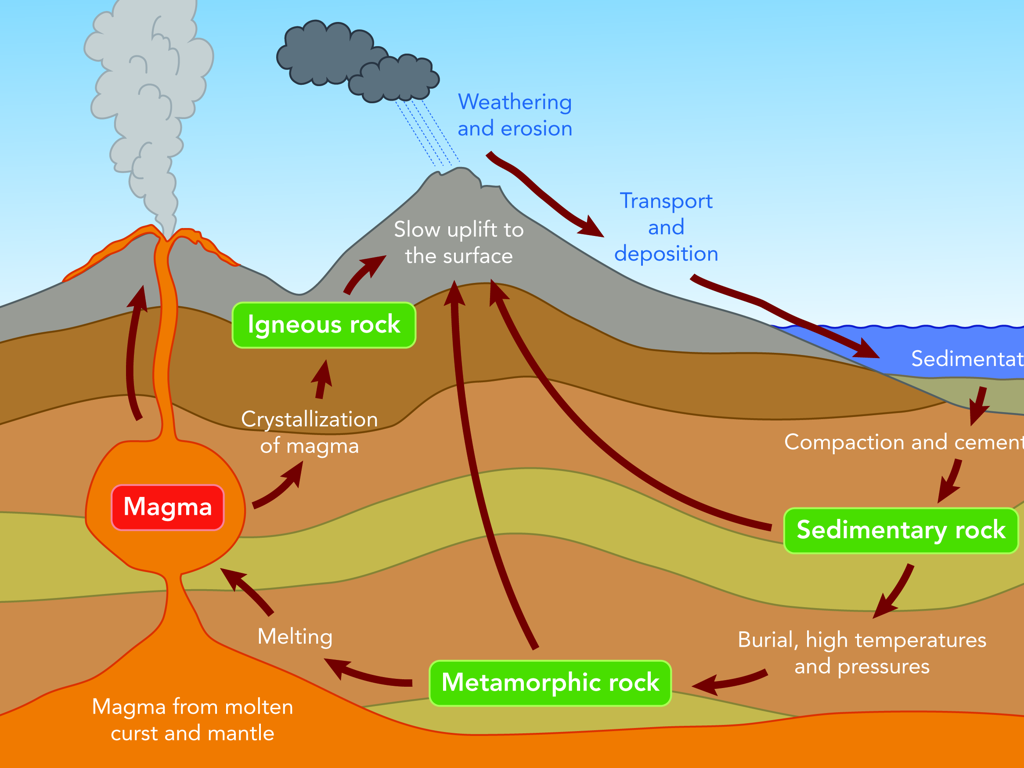Write An Equation From A Graph Using A Table
Subject: Math
Grade: Seventh grade
Topic: Two-Variable Equations
Please LOG IN to download the presentation. Access is available to registered users only.
View More Content
Introduction to Two-Variable Equations
– Relationship between variables
– Variables can depend on each other, like distance and time.
– Defining two-variable equations
– Equations with two variables represent paired data, e.g., y = 2x + 3.
– Real-life two-variable examples
– Examples: budgeting expenses, tracking sports scores.
– Graphs and tables connection
– Use tables to organize values and plot them on a graph.
|
This slide introduces the concept of two-variable equations, which are fundamental in understanding how one quantity relates to another. Start by explaining variables and how they can be interdependent, using relatable examples like the relationship between distance traveled and time taken. Define two-variable equations and illustrate with simple linear equations. Provide real-life scenarios where two-variable relationships are evident, such as budgeting or sports statistics. Finally, show how these relationships can be represented on a graph using a table of values, setting the stage for writing equations from graphs.
Graphs, Tables, and Equations
– Visual data representation
– Graphs show trends, tables show exact values.
– Graphs vs. tables connection
– Each graph point corresponds to a table entry.
– Interpreting graph points
– Points (x, y) on graphs represent data pairs in tables.
– Writing equations from graphs
– Use points to form equations representing the relationship.
|
This slide introduces students to the concept of representing data visually through graphs and tables, and how to write equations based on this information. Start by explaining that graphs can illustrate trends and changes over time, while tables provide precise numerical values. Highlight the direct connection between a point on a graph and its representation in a table. Teach students how to read coordinates of points on a graph and understand them as pairs of values in a table. Finally, guide them through the process of using these points to write a two-variable equation that represents the relationship shown in the graph. Encourage students to practice with different graphs and tables to become comfortable with the concept.
Writing Equations from Graphs
– Find patterns in data tables
– Look for consistent changes between values
– Use patterns to predict points
– Extrapolate data to estimate future values
– Understand slope concept
– Slope is the rate of change between points
– Learn about y-intercept
– Y-intercept is where the line crosses the y-axis
|
This slide introduces students to the process of writing equations from graphs by identifying patterns in tables. Students should learn to observe how values change consistently, which is the foundation for understanding the slope of a line. They will use these patterns to predict future points on the graph. The concept of slope, defined as the rate of change between points on a line, is crucial for understanding linear relationships. Additionally, students will learn about the y-intercept, the point where the line crosses the y-axis, which is essential when writing the equation of a line. Encourage students to practice by creating tables from given graphs and then writing the corresponding equations, reinforcing the concepts of slope and y-intercept.
Creating Equations from Graphs
– Steps to write an equation
– Identify the graph’s slope
– Slope shows rise over run between points
– Determine the y-intercept
– Y-intercept is where the line crosses the Y-axis
– Formulate the equation
– Use y = mx + b, where m is slope, b is y-intercept
|
This slide introduces the process of writing an equation based on a graph. Start by explaining the steps to identify the necessary components of the equation. Emphasize the concept of slope as the ‘rate of change’ or ‘rise over run,’ which can be found by selecting two points on the graph. The y-intercept is the point where the line crosses the Y-axis, indicating the starting value of the dependent variable when the independent variable is zero. Conclude by showing how to combine these elements into the slope-intercept form of a linear equation, y = mx + b. Provide examples of different slopes and y-intercepts on various graphs and have students practice formulating equations from these graphs.
Writing Equations from Graphs
– Walk through a practice example
– Find slope and y-intercept from table
– Slope (m) is rise over run between points
– Write the equation from the graph
– Use two points to calculate slope and y-intercept
– Understand the y=mx+b format
– Equation of a line in slope-intercept form
|
This slide is aimed at providing students with a structured approach to writing equations from graphs. Start with a step-by-step walkthrough of a practice example, ensuring students understand each phase. Emphasize the process of finding the slope (rise over run) and the y-intercept (where the line crosses the y-axis) from a table of values. Demonstrate how to translate this information into the slope-intercept form of a linear equation, y=mx+b, where m represents the slope and b represents the y-intercept. Encourage students to practice with different examples and reinforce the concept that the graph’s visual representation can be expressed algebraically.
Class Activity: Graphs to Equations
– Receive a blank graph and table
– Plot points from the table
– Use the table values as coordinates
– Write a two-variable equation
– Form y = mx + b using plotted points
– Understand the relationship
– See how the equation represents the graph
|
In this activity, students will apply their knowledge of two-variable equations by creating a visual representation on a graph. Provide each student with a blank graph and a table of values. They will plot the points from the table onto the graph, which will help them visualize the linear relationship between the variables. Once the points are plotted, guide them to draw the line of best fit and use it to write the equation of the line in the form y = mx + b, where m is the slope and b is the y-intercept. This hands-on activity will reinforce their understanding of how equations correspond to graphical representations. Possible variations for different students could include tables with different ranges of values, positive/negative slopes, or varying y-intercepts to show diverse examples of linear relationships.
Review and Q&A: Equations from Graphs
– Recap today’s graph-to-equation lesson
– Open floor for student questions
– Address doubts and confusions
– Reinforce learning with examples
– Example: Given a graph, how do we form the equation y=mx+b?
|
This slide is meant to consolidate the students’ understanding of writing equations from graphs using tables. Begin with a brief recap of the key points from today’s lesson, emphasizing the step-by-step process of identifying the slope (m) and y-intercept (b) from a graph to write an equation in the form y=mx+b. Encourage students to ask questions about any part of the lesson they found challenging. Clarify common areas of confusion, such as distinguishing between positive and negative slopes or interpreting the y-intercept. Use additional examples to reinforce the concept if time allows. This interactive session will help ensure that students are well-prepared to apply these skills in their future math work.
Homework: Equations from Graphs
– Practice writing equations from graphs
– Complete the provided worksheet
– Use the worksheet to apply what you’ve learned
– Different examples on worksheet
– Each example will have a unique graph and table
– Discuss your answers next class
|
This homework assignment is designed to reinforce the students’ ability to write equations based on graphical data. The worksheet will provide a variety of examples, each with a different graph and corresponding table, to ensure that students get ample practice with the concept. Encourage students to try to find the relationship between the variables and to write the equation that represents this relationship. Remind them to look for patterns in the tables that correspond to the graph. In the next class, there will be a discussion where students can share their approaches and solutions, which will help them understand different methods of deriving equations from graphs.





